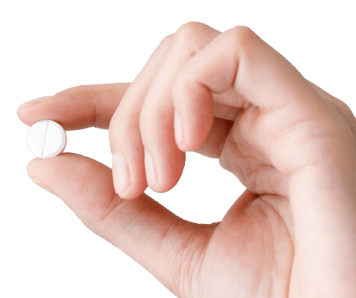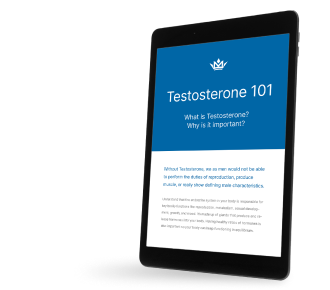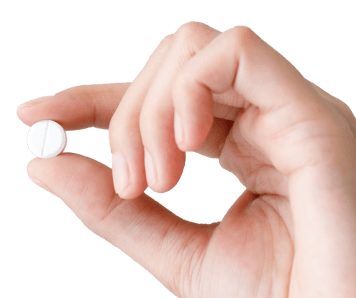As we age, our bodies naturally slow down. Energy levels drop. Sleep becomes shallow. Belly fat sticks around. Recovery takes longer. These changes are not just the result of aging or lifestyle—they’re often tied to a quiet but powerful hormonal shift: the gradual decline of growth hormone (GH) secretion.
Growth hormone is critical to how we feel, look, and perform. It helps build muscle, burn fat, repair tissue, and support deep sleep. It also stimulates insulin-like growth factor 1 (IGF-1) production in the liver, promotes protein synthesis, and supports memory consolidation. After age 30, growth hormone production drops by about 15% per decade. Nocturnal GH pulse amplitude can fall by 50 percent by age 60. That slow decline can add up to big changes in how we function day to day. A study published in The Journal of Clinical Endocrinology & Metabolism confirms this steady decrease in growth hormone secretion with age.
Sermorelin therapy is a breakthrough solution for this. It doesn't replace hormones artificially. Instead, it helps your body produce more of its own growth hormone—the way it used to when you were younger. Maximus offers a physician-supervised Sermorelin protocol that makes this powerful therapy safe, effective, and accessible. Here's what you need to know.
What Is It?
Sermorelin is a peptide—a short chain of amino acids—that stimulates your brain to produce more growth hormone. Chemically, it is the 1-29 amino-acid fragment of native Growth-Hormone-Releasing Hormone (GHRH-1-44) and carries an amide at the C-terminus (GHRH-1-29-NH₂). It mimics GHRH, which signals your pituitary gland to make growth hormone.
Unlike synthetic HGH (human growth hormone), which overrides your body’s natural production, Sermorelin supports the natural feedback loop. It tells your body when to make more hormone, how much, and when to stop. That makes it a smarter and more physiologic approach—one that works with your body instead of against it.
Because it works by restoring natural rhythms, Sermorelin helps you get the benefits of higher growth hormone levels without the risks of over-supplementation. Its short half-life (about 10–20 min after subcutaneous injection) limits excessive exposure. It boosts hormone levels gradually, in a way that mimics the healthy patterns of your youth.
Why Growth Hormone Matters
Growth hormone plays a key role in metabolism, body composition, cellular repair, and brain function. It’s essential for burning fat, building lean muscle, maintaining skin elasticity, and healing tissues.
It also helps regulate deep sleep, especially the slow-wave sleep cycle when your body does most of its recovery and repair. Poor sleep and low energy can often be linked back to low growth hormone—even if everything else looks fine.
As natural production drops, you may start to notice subtle but persistent changes. You might feel more tired after workouts, have trouble sleeping through the night, or see stubborn fat accumulate around your midsection. Your skin may start to thin. Mental clarity and drive may take a hit. These are all signs of a body that’s not regenerating the way it used to.
Who Is Sermorelin For?
Sermorelin therapy is ideal for men and women in their 30s, 40s, 50s, and beyond who are noticing signs of age-related hormone decline. If you feel like you’re doing everything right—eating clean, training hard, prioritizing recovery—but still struggling with energy, fat loss, or sleep, Sermorelin might be the missing link.
It’s especially effective for people with low or low-normal IGF-1 levels. IGF-1 is a hormone that reflects growth hormone activity in the body.
You don’t need to be deficient to benefit. Sermorelin is for people who want to optimize. It’s for high performers, biohackers, longevity seekers, and anyone who wants to age stronger, not just slower.
Unlike synthetic HGH, Sermorelin doesn’t shut down your natural hormone production. It preserves—and even strengthens—your body’s own systems. That makes it safer for long-term use and better suited for those who care about doing things the right way.
Sermorelin vs. HGH: What’s the Difference?
There’s a lot of confusion between Sermorelin and human growth hormone. Both aim to increase growth hormone levels—but they do it in very different ways.
HGH is a synthetic version of growth hormone that’s injected directly into the body. Because it bypasses the body’s feedback system, it can lead to excessive hormone levels, pituitary shutdown, water retention, insulin resistance, and long-term health complications.
Sermorelin, on the other hand, supports your body’s own production. It works by stimulating your pituitary gland to make more growth hormone, just like it used to in your 20s. This method keeps your body in control, maintaining natural hormone balance and avoiding the risks of overdose or suppression.
That’s why Sermorelin is legal, safe for longer-term use, and often preferred by physicians who prioritize longevity and optimization over shortcuts.
The Benefits of Sermorelin Therapy
Sermorelin isn’t magic, but for the right person, it can feel close. One of the first things people notice is deeper, more restorative sleep. You may fall asleep faster, stay asleep longer, and wake up feeling fully recharged. That alone can transform your productivity, recovery, and mental clarity.
Body composition also begins to shift. Sermorelin helps you lose fat and preserve or even build lean muscle, especially when combined with strength training and a high-protein diet. Fat around the belly, chest, and thighs tends to melt away slowly but steadily.
Many people report improved skin tone and elasticity, thanks to collagen support and tissue regeneration. Hair may grow faster, nails may become stronger, and mood may lift as energy levels rise. Clinical trials in older adults show reductions of roughly 1–2 kg fat mass and gains in lean mass after six months of nightly dosing.
These changes don’t happen overnight. Sermorelin is not a quick fix—it’s a long-term investment in how you feel and function. Most people use it for 3 to 6 months, sometimes longer, depending on their goals and response. But once the effects kick in, they tend to be sustainable and worth the wait.
How the Maximus Protocol Works
Maximus offers a comprehensive, doctor-prescribed Sermorelin protocol that is medically supervised yet requires no pre-treatment lab work or video visit, keeping enrollment fast and friction-free. It’s not just a prescription—it’s a full medical program that prioritizes safety, customization, and long-term results. With Maximus, to qualify for Sermorelin, bloodwork and a physician video consultation are not required.
The therapy involves nightly injections of Sermorelin, taken before bed. This aligns with the body’s natural circadian rhythm, when growth hormone is released during deep sleep.
Over time, you may start to notice changes in how your body feels, looks, and performs. Most people report better sleep quality within the first few weeks. Along with sleep quality, you have the ability to improve energy levels, fat loss, recovery, skin texture, and overall wellness.
Once started, a licensed Maximus physician oversees your care, answers questions, and modifies your treatment if needed.
Is Sermorelin Right for You?
If you’re over 30 and starting to feel the slow burn of age-related decline—in energy, recovery, fat loss, or sleep—Sermorelin could be the missing piece. It offers a smarter, more natural path to hormone optimization without the risks of synthetic alternatives.
Sermorelin therapy is not just about looking better—it’s about reclaiming function, performance, and control. It’s about helping your body do what it was built to do, just more effectively.
If you’re ready to optimize your health, energy, and aging trajectory, visit Maximus to learn more or get started today.
Reviewed by Gabriel Alizaidy, MD, MS
----
Disclaimer: The contents of this article, including, but not limited to, text, graphics, images, and other information, is for information purposes only and does not constitute medical advice. The information contained herein is not a substitute for and should never be relied upon for professional medical advice. The content is not meant to be complete or exhaustive or to be applicable to any specific individual's medical condition. You should consult a licensed healthcare professional before starting any health protocol and seek the advice of your physician or other medical professional if you have questions or concerns about a medical condition. Always talk to your doctor about the risks and benefits of any treatment. Never disregard or delay seeking professional medical advice or treatment because of something you have read on this site. Maximus does not recommend, endorse, or make any representation about the efficacy, appropriateness, or suitability of any specific test, products, procedures, treatments, services, opinions, healthcare providers or other information contained herein. Maximus is not responsible for, nor will they bear any liability for, the content provided herein or any actions or outcomes resulting from or related to its use.
----
References:
- ZVI ZADIK, A. CHALEW, ROBERT J. McCARTER, MARY MEISTAS, A. AVĮNOAM KOWARSKI, The Influence of Age on the 24-Hour Integrated Concentration of Growth Hormone in Normal Individuals, The Journal of Clinical Endocrinology & Metabolism, Volume 60, Issue 3, 1 March 1985, Pages 513–516, https://doi.org/10.1210/jcem-60-3-513
- Liu H, Bravata DM, Olkin I, et al. Systematic review: the safety and efficacy of growth hormone in the healthy elderly. Ann Intern Med. 2007;146(2):104-115.
- Bartke A. Growth Hormone and Aging: Updated Review. World J Mens Health. 2019;37(1):19-30. doi:10.5534/wjmh.180018
- Emiliano Corpas, S. Mitchell Harman, Marc R. Blackman, Human Growth Hormone and Human Aging, Endocrine Reviews, Volume 14, Issue 1, 1 February 1993, Pages 20–39, https://doi.org/10.1210/edrv-14-1-20
- Fernández-Garza LE, Guillen-Silva F, Sotelo-Ibarra MA, Domínguez-Mendoza AE, Barrera-Barrera SA, Barrera-Saldaña HA. Growth hormone and aging: a clinical review. Front Aging. 2025;6:1549453. Published 2025 Apr 7. doi:10.3389/fragi.2025.1549453








